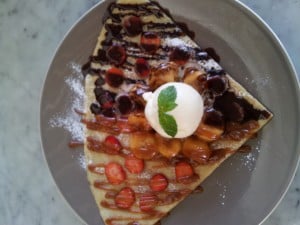 What affects your diet? Is it just what you eat or also on how you eat, the choice of utensil you use. What can influence the taste of food you eat? Coined as new frontier of medicine known as environmental psychology, basically accepting that environment affects our sensory perception whether touch, sight, sound and taste.
What affects your diet? Is it just what you eat or also on how you eat, the choice of utensil you use. What can influence the taste of food you eat? Coined as new frontier of medicine known as environmental psychology, basically accepting that environment affects our sensory perception whether touch, sight, sound and taste.
A recent study shows that tableware affects our perception with food we eat. The experiment was designed to investigate the factors how the taste of food is affected, whether it’s on human body reaction or the wares used. Considered were the visual and neural properties of the cutlery.
Oxford University conducted research with the colour, properties and size of cutlery. Researchers sampled yoghurt using different spoons. Participants has to rate the taste majority says that yogurt tastes more filling and dense tasting using lightweight spoon compared from heavier plastic spoon. The sampling also found that colour of spoon influence the taste, yoghurt is sweeter when eaten with a light-coloured spoon than eaten off black spoon. Pink yoghurt when on blue spoon, it tastes saltier and not so sweet when on white spoon, factor would be the aesthetic of colour is less inviting. Interestingly, the contrast affected the taste of the food, concluding that less contrast between the food and utensils made the yoghurt sweeter.
 Same findings came out with the recent European research if the colour of cup can affect the drink tastes. Afore University and Polytechnic University of Valencia found that chocolate on an orange or cream cup tastes better over white or red cup.
Same findings came out with the recent European research if the colour of cup can affect the drink tastes. Afore University and Polytechnic University of Valencia found that chocolate on an orange or cream cup tastes better over white or red cup.
Another has something to do with the size of utensil. In 1856 when the Delboeuf Effect was first documented where in most people perceive that the dark circle in the middle is bigger than of the other, but the truth is they are in the same size. Same as for long time we’ve known that on bigger plate we eat more, especially with children.
Apparently, it shows that the colour, size, aesthetics and properties of cutlery have impact with our food taste. These results show the complexity of perceiving tastes than just spoon preference.
On the other hand, “this may be used to help control eating patterns, portion size or salt amount added to food,” coined Dr. Vanessa Harrar, lead author of the study.
People may even have better food choices with the colour associated on advertisements. A good thought to losing weight too. This is the toughest thing we can do for our body physically and psychology.
Hana King is our correspondent in Manila. She can be contacted here
To have a private consultation with Dadhichi Toth – our resident astrologer… CLICK HERE!














